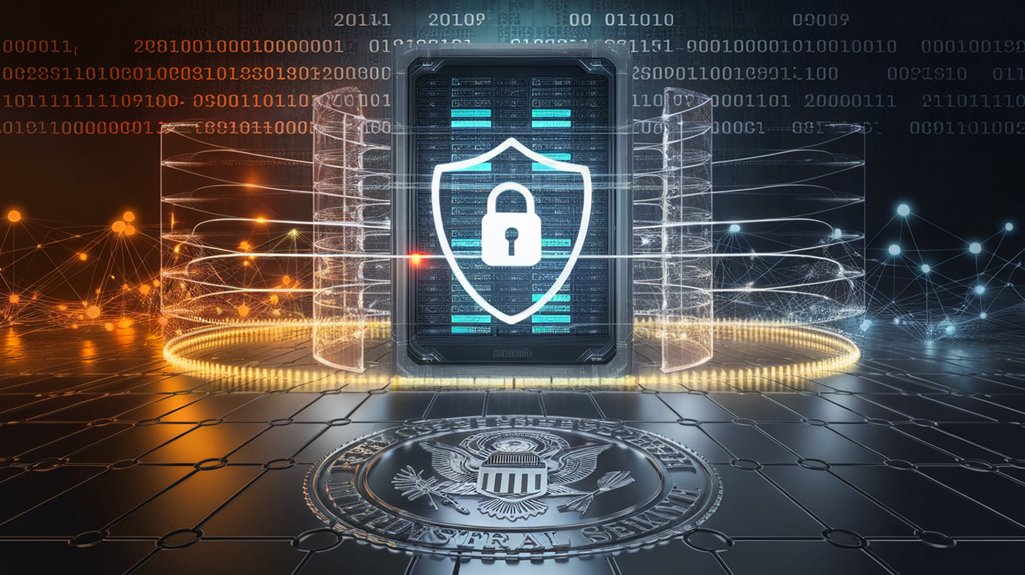Federal contractors registering in SAM must comply with cybersecurity requirements based on NIST SP 800-171 standards. Organizations handling Controlled Unclassified Information must implement specified security controls, conduct risk assessments, and document system security plans. Entities seeking DoD contracts need CMMC certification at appropriate levels, requiring third-party assessment from authorized organizations. Regular monitoring, vulnerability scanning, and updated documentation are essential for maintaining compliance. The following sections outline specific implementation steps for meeting these requirements.
Table of Contents
ToggleEssential CMMC Certification Steps for Federal Contractors

Federal contractors must navigate five critical steps to achieve Cybersecurity Maturity Model Certification (CMMC) compliance for Department of Defense contracts.
First, organizations should conduct a thorough gap analysis against NIST SP 800-171 standards to identify weaknesses.
Second, companies must document their security posture through formal System Security Plans and submit compliance scores to the Supplier Performance Risk System.
Third, contractors need to implement robust CMMC assessment strategies, including determining appropriate certification levels based on contract requirements. DoD’s tiered approach includes three certification levels with increasingly stringent security controls depending on the sensitivity of information handled. Preparation for Level 2 certification typically requires 6-18 months of dedicated effort.
Fourth, organizations handling CUI in Defense categories must schedule third-party assessments with C3PAOs.
Finally, prime contractors must establish verification systems for subcontractor compliance, ensuring all partners meet CMMC requirements.
With full enforcement coming by 2028, early preparation is essential for maintaining DoD contract eligibility.
Implementing Effective Risk Management Protocols

Beyond CMMC certification requirements, organizations registered in the System for Award Management (SAM) must establish extensive risk management protocols to safeguard sensitive information.
Implementing NIST guidelines provides a structured approach to identifying vulnerabilities and potential threats to federal information systems.
Effective risk management begins with thorough risk assessment, using specialized tools to evaluate information security vulnerabilities and their potential impact. Organizations should particularly focus on aligning with the NIST Cybersecurity Framework’s five core functions: Identify, Protect, Detect, Respond, and Recover.
Maintaining compliance requires continuous monitoring of systems and networks to detect emerging threats. This ongoing vigilance guarantees that security controls remain effective over time.
Regular system audits, vulnerability scanning, and security incident reviews help SAM entities adapt their protection measures to evolving cybersecurity challenges. The Essential Eight framework, developed by the Australian Cyber Security Centre, offers prioritized mitigation strategies that can further strengthen an organization’s cybersecurity posture.
Navigating SAM Policy Frameworks and Compliance Requirements

Successful navigation of the SAM policy framework requires entities to understand and implement multiple compliance requirements across the federal acquisition landscape. Organizations must maintain accurate SAM registration and guarantee their documentation aligns with the Integrated Award Environment (IAE) standards.
The NIST Cybersecurity Framework serves as a cornerstone for SAM entities, providing sector-neutral guidance adaptable to various organizational needs. Entities should develop organizational profiles that describe both current and target cybersecurity postures using the framework’s outcomes.
For effective compliance, SAM-registered organizations must:
- Regularly update entity information on SAM.gov
- Implement appropriate cybersecurity risk management tiers
- Maintain compliance documentation that meets federal standards
- Utilize available cybersecurity support services through the platform
Frequently Asked Questions
How Long Does Initial CMMC Certification Typically Take?
Initial CMMC certification typically takes between 6-12 months, depending on several CMMC timeline factors.
Organization size, current security posture, and targeted certification level greatly impact the duration.
Certification process challenges include documentation requirements, implementation of security controls, and staff training.
The assessment phase alone may take several weeks, while remediation of identified gaps often consumes the majority of the timeline.
Most organizations require at least two quarters of dedicated preparation before undertaking formal assessment.
Are Subcontractors Required to Meet the Same Cybersecurity Standards?
Yes, subcontractors must meet the same cybersecurity standards as prime contractors when handling the same level of sensitive information.
Subcontractor obligations include obtaining the appropriate CMMC certification level required for their specific contract role.
The DoD does not reduce requirements based on position in the supply chain.
Any entity handling Federal Contract Information (FCI) or Controlled Unclassified Information (CUI) must implement the corresponding security controls, regardless of their status.
What Are the Penalties for Non-Compliance With SAM Security Requirements?
Non-compliance with SAM security requirements can result in severe consequences.
Organizations may face non-compliance fines, contract termination, and potential legal action from federal authorities. Regular security audits may be imposed on violating entities at their own expense.
Additionally, businesses risk being suspended or debarred from future government contracts, which impacts reputation and revenue. Federal funding may be revoked, and organizations could face civil penalties under the False Claims Act if they falsely certify compliance.
How Often Must Cybersecurity Training Be Updated for Employees?
Organizations should update cybersecurity training for employees at least twice yearly, with many experts recommending refreshers every 4-6 months.
Maintaining regular employee awareness programs aligns with regulatory frameworks like GDPR and ISO 27001.
Training updates should reflect:
- Current threat landscapes
- New phishing tactics
- Emerging vulnerabilities
High-turnover environments may require more frequent updates, while all new employees should receive thorough training during onboarding regardless of the regular schedule.
Can Small Businesses Receive Financial Assistance for CMMC Implementation?
Small businesses can access several CMMC funding options to offset implementation costs.
The Department of Defense offers direct grants through programs like CMMC-IM specifically for cybersecurity compliance. Small business grants are also available through state and local government agencies.
Additionally, the proposed Small Business Cybersecurity Act of 2024 would provide tax credits up to $50,000 for businesses with fewer than 50 employees implementing CMMC requirements.